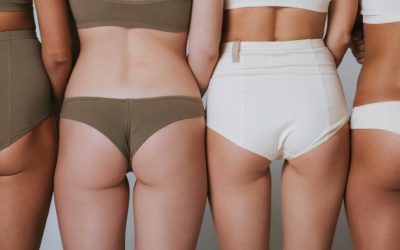ON THE BLOG
What Conditions Can Botox® Fix?
Botox® is a commonly known injectable that’s used for both aesthetic and functional purposes. Patients love the procedure because treatments are quick, easy, and virtually painless. At The Woodlands Plastic Surgery, Botox® treatments are provided by Board-certified plastic surgeon Dr. Bryan Correa to ensure an optimal outcome each and every time.
*Individual results may vary
How Does Botox® Work?
Botox® is a neuromodulator that essentially stops nerves from talking to the affected muscle. The unique treatment method makes Botox® beneficial for a variety of concerns. Patients can typically see results in as little as several days with an optimal outcome lasting several months or more. Let’s take a look at a few ways you may be able to take advantage of Botox® treatments.
#1: Wrinkle Reduction
One of the most obvious conditions Botox® can fix is visible signs of aging including wrinkles. Botox® is most effective for deep dynamic wrinkles caused by repetitive facial movements. Patients can address a variety of lines and wrinkles including crow’s feet, forehead wrinkles, frown lines, and even horizontal neck bands.
#2: Sculpt the Lower Face
More and more patients are beginning to use Botox® on the lower portion of the face to improve their overall profile. Over time, Botox® actually works to shrink muscles in the chin and jawline for a more contoured appearance. Botox® is also effective for patients looking for a preventative solution to combat genetics.
#3: Thwart Excessive Sweating
Excessive sweating (Hyperhidrosis) is a common condition among both men and women. Botox® stops overactive sweat glands from secreting unwanted sweat. Patients can safely minimize sweating on the face, forehead, palms, underarms, and soles of the feet. Botox® treatments for excessive sweating can last upwards of 6-months.
Botox Consultations Available
#4: Combat Eye Dysfunctions
Botox® is highly effective for treating a variety of eye dysfunctions. By slowing nerve-muscle communication, Botox® can help with everything from an overly lazy eye to unwanted twitching. Restore optimal eye health for 4-6 months with Botox® treatments.
#5: Tame Chronic Migraines
Botox® is FDA-approved to treat migraines by relieving pressure caused by muscle contractions. Reduce migraine inducing symptoms such as nausea as well as sensitivity to light and sound in just 1-2 weeks after treatment. Typically, the more often a patient has frequent headaches, they better they do with Botox® treatments.
Is Botox® Right for You?
Aside from the above-mentioned conditions, Botox® has a wide range of off-label functional and aesthetic uses. It’s always a good idea to choose a skilled provider who is experienced with the nuances of the product to avoid a less than ideal outcome. At the time of your initial consultation, Board-certified Plastic surgeon Dr. Correa will assess your concerns and determine if Botox® is right for you.
Take the Next Step
Interested in learning more about Botox® procedures? Schedule your free consultation with Board-Certified Plastic Surgeon Dr. Correa by filling out the form on this page or by calling The Woodlands Plastic Surgery at (281) 419-9119. Proudly serving patients in The Woodlands & Houston, TX.
*Individual results may vary.
VIEW MORE POSTS
What Procedures Make Up a Mommy Makeover?
ON THE BLOG A Mommy Makeover is a loose term for a combination of procedures aimed at restoring a pre-pregnancy figure. Pregnancy, childbearing, and nursing have a big impact on a woman’s body and its appearance. A Mommy Makeover can reverse these effects and give...
How Long After Pregnancy Can I Get A Mommy Makeover?
ON THE BLOGA mommy makeover can be a game-changing procedure for women who are unhappy with their post-pregnancy figure. However, it’s important that you allow your body enough time to bounce back after pregnancy and breastfeeding beforehand. Pushing yourself too hard...
Does Labiaplasty Affect Intimacy?
ON THE BLOGLabiaplasty is a surgical procedure that reduces or reshapes the inner lips, or ‘labia minora’ of the vulva. Childbirth, aging and gravity, or hormones may affect the shape and size of the labia. When the labia minora are no longer protected by the labia...



